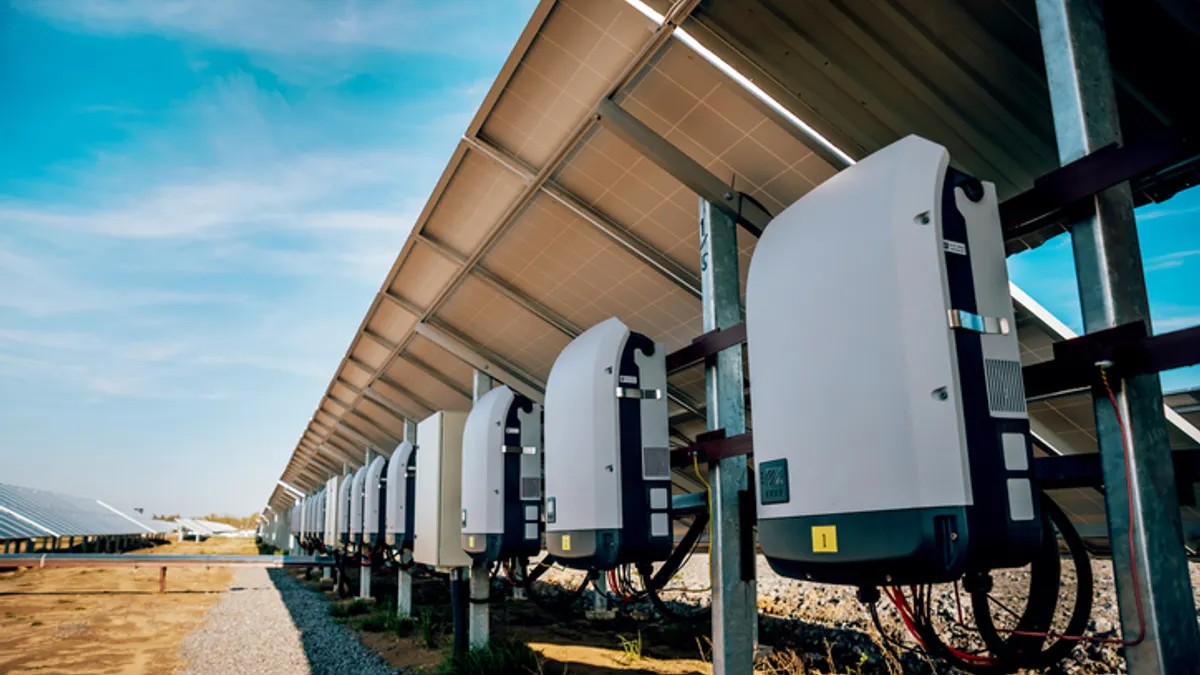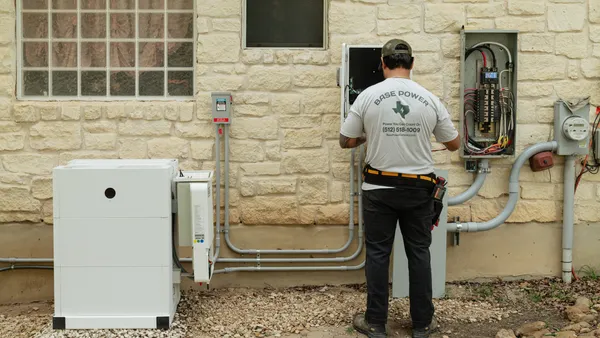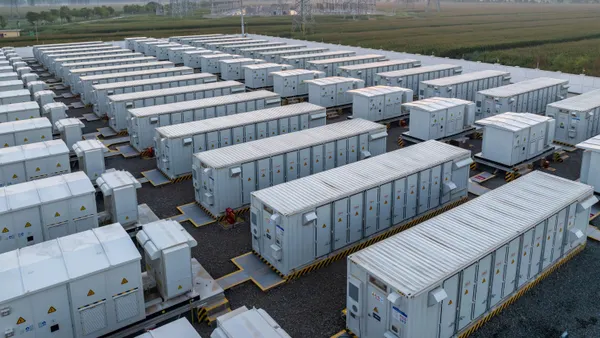Dive Brief:
- New York Gov. Kathy Hochul (D) announced plans this week to double the state's energy storage deployment target from 3 GW to at least 6 GW by 2030 as part of a suite of clean energy announcements.
- New York's 3 GW target already led the country for the end of the decade. The new target, detailed in Hochul's State of the State book released Wednesday, will be accompanied by "needed market reforms and cost-effective procurement mechanisms," as well as incentives for private customers to install storage.
- The ambitious new goal will be achievable with state support, said Bill Acker, executive director of the New York Battery and Energy Storage Technology (NY-BEST) consortium, "The work that has been done over the past year has led to an understanding of the need for a greater amount of storage to facilitate a clean energy grid."
Dive Insight:
The revamped storage goal follows a recommendation from the state Climate Action Council's draft scoping plan, released in December 2021, which said the state should review its Energy Storage Roadmap "as soon as practicable." In addition, the New York Power Grid Study, released in January 2021, identified the need for more than 15 GW of energy storage by 2040, with 7,300 MW located in New York City and Long Island, in order to support zero-emission electricity production by 2040.
New York's nation-leading goal had a slow start, with several utilities failing to meet initial deployment targets established in the storage roadmap. Last year, the state Public Service Commission extended some deadlines and made other regulatory tweaks to allow utilities to deploy more storage.
NY-BEST's Acker said that meeting the 6 GW goal will require "many stakeholders coming together to achieve those targets," with a combination of state incentives, utility investments and industrial users purchasing on-site storage. The Climate Action Council scoping plan also recommends that building codes incentivize installation of storage, as well as additional financial incentives. Almost all of the $350 million in storage incentives set out in the 2018 storage order have been distributed, the document found.
Con Edison spokesman Allan Drury said the utility "shares Gov. Hochul's belief that energy storage will play an essential role in our clean energy future by allowing us to maximize the benefits of the large amount of renewable energy New York State will add to its portfolio." Drury pointed to a 100 MW/400 MWh storage facility being installed with partner 174 Power Global on the site of a former fossil fuel plant in Astoria, Queens, as an example of the kind of large installations that will help the state meet its goals.
National Grid spokesman John Lamontagne said in a statement that incentives like tax credits, "especially in the early stages of growing energy storage, will help move the needle quickly."
"The time to move is now, and we're thrilled the governor's proposal takes bold action on storage," Lamontagne added.
Besides raising the storage target, Hochul announced that the state would create a battery technology development and manufacturing center at Binghamton University. The BATTERY-NY center will be led by Stanley Whittingham, who received a 2019 Nobel prize for his work in developing lithium-ion batteries. In addition, the center will include a chief operating officer from the battery industry to be named at a later date and an official from NY-BEST.
Hochul also announced an offshore wind procurement expected to result in at least 2 GW of new projects, a proposal to make all new building construction reach zero emissions by 2027 and the development of 2 million "electrified or electrification-ready homes" by 2030.
Nine states currently have energy storage targets; the largest after New York's is Virginia's 3.1 GW deployment target for 2035.
"Gov. Hochul and New York see that the immense opportunity in building a clean energy future is closer than we thought," said Jason Burwen, vice president of energy storage for the American Clean Power Association. "With the state well on the way to achieving its 2030 storage deployment goal of 3 GW, and with massive wind and solar expansions to come that will rely on storage, doubling that goal to 6 GW is both prudent and a strong signal to the storage industry to invest in building its supply chain in the Empire State."













